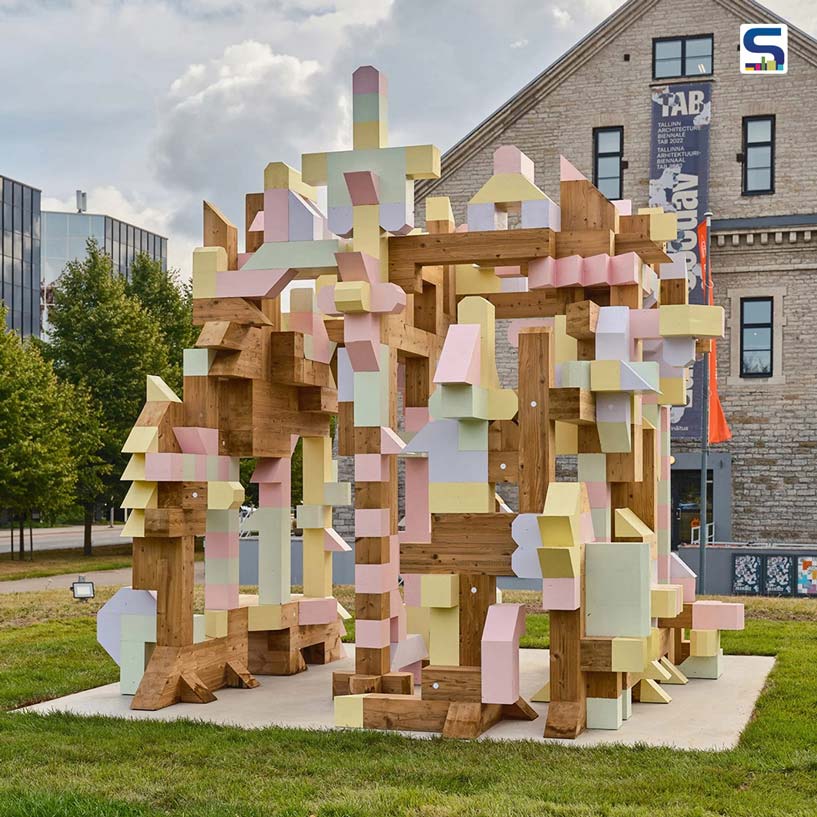
For the first time, a pavilion has been designed by the public using non-fungible tokens (NFTs). NFTs are credentials of authenticity and ownership that exit virtual or digitally and can be assigned to real or digital assets. Each of the NFTs is individually minted on a blockchain, which is as similar to a cryptocurrency transaction, allowing it to purchase, sell or collect.
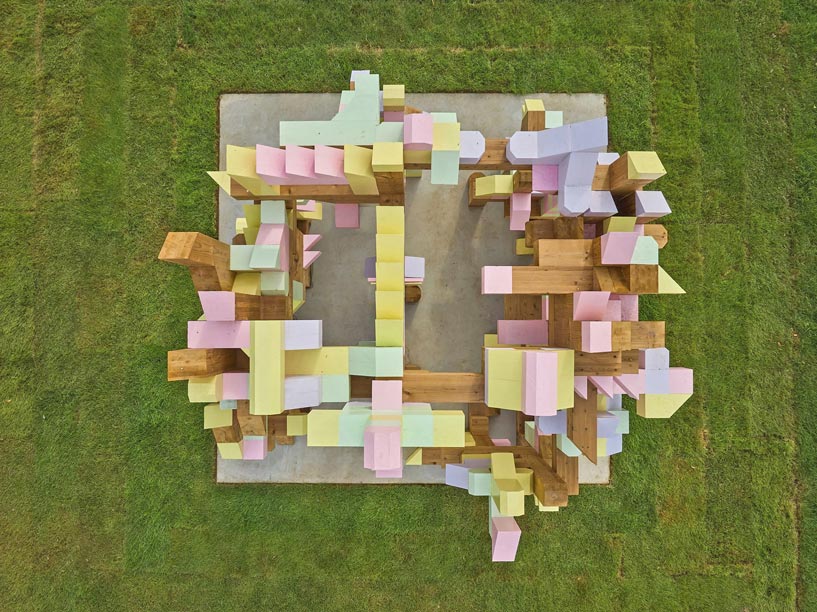 Fungible Non-Fungible Pavilion has been built from 78 unique puzzle-like pieces.
Fungible Non-Fungible Pavilion has been built from 78 unique puzzle-like pieces.
Owned and co-funded by the public, the Fungible Non-Fungible Pavilion is the first NFT pavilion in the world. Its puzzle-like structure is designed by the UK-based design studio Iheartblob. Know more about the pavilion on SURFACES REPORTER (SR).
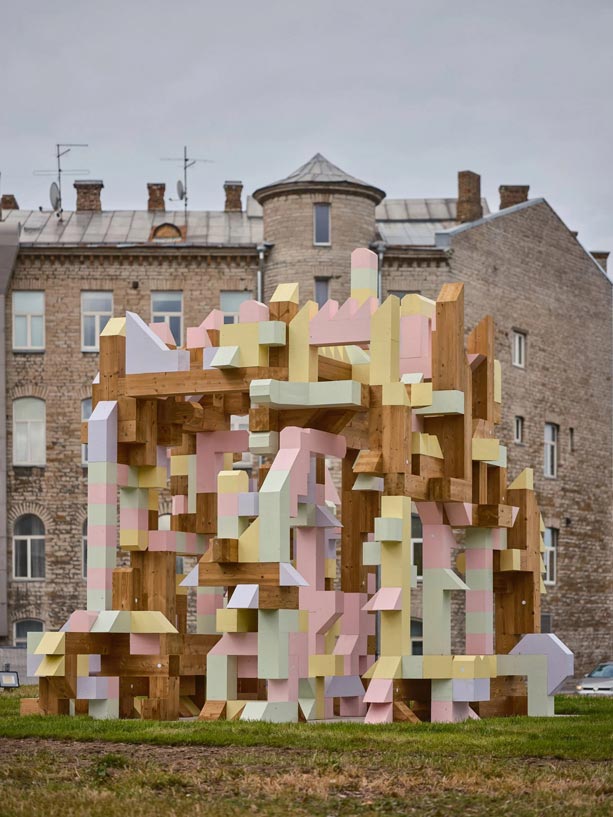 The team designed an NFT generative tool that can be used by anyone to design and mint objects.
The team designed an NFT generative tool that can be used by anyone to design and mint objects.
Located at the Tallinn Architecture Biennale in Estonia, the experimental structure had been the winning entry in the Slowbuilding competition. Built from the physical version of NFT objects, the architects decided to use a technology that is new and experimental. To promote a slow and decentralised approach to design, the team integrated the technology to benefit from it to the fullest and included the community to replace the architects as the master builder.
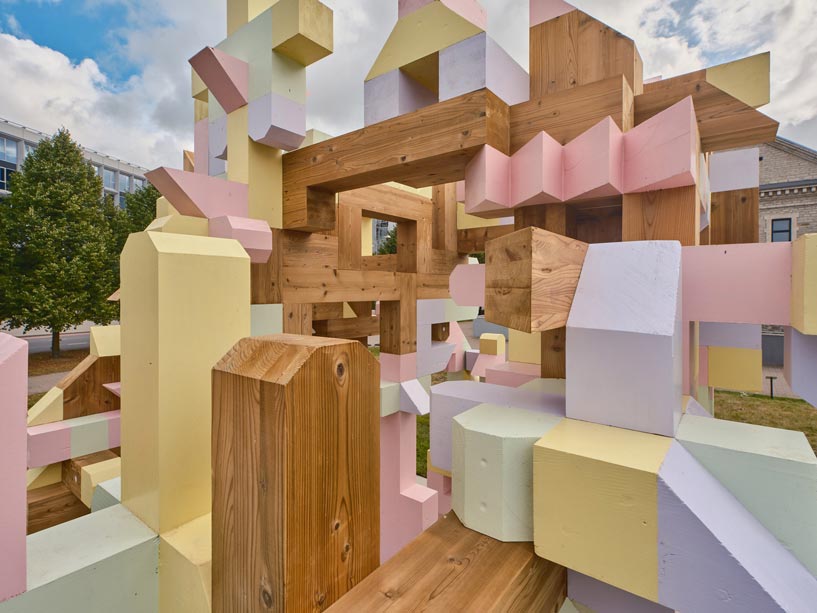 The pavilion is expected to evolve and grow during its tenure which is until the opening of the forthcoming TAB 2023 as the NFT generative tool is still open for use.
The pavilion is expected to evolve and grow during its tenure which is until the opening of the forthcoming TAB 2023 as the NFT generative tool is still open for use.
Based on the theme of the sixth edition of the biennial TAB festival, Edible; Or, the Architecture of Metabolism, Fungible Non-Fungible Pavilion has been built from 78 unique puzzle-like pieces. Additionally, the pavilion is also expected to expand. For this, the team designed an NFT generative tool that can be used by anyone to design and mint objects. Each NFT minted with this generative tool has funded a unique physical twin which is used in the pavilion, thereby allowing its presence in the metaverse and real-time.
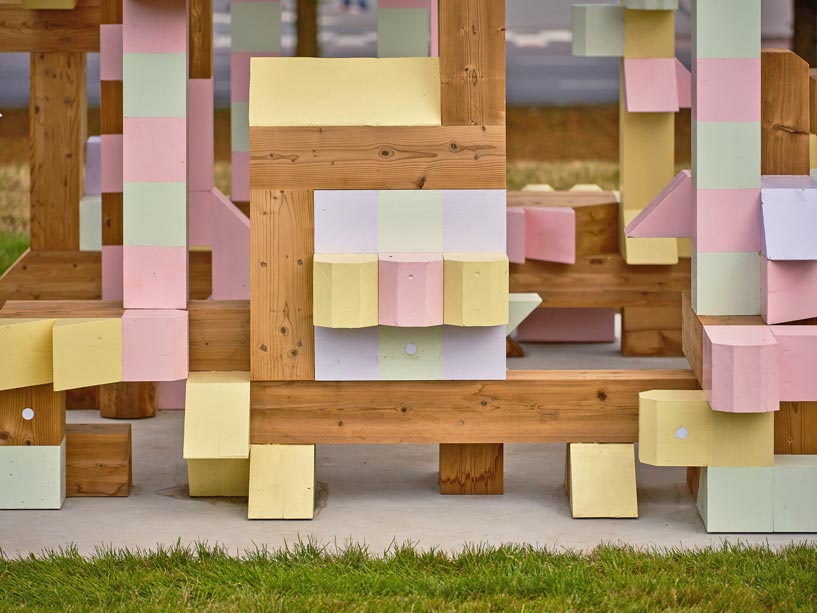 The tool works in accordance with the architect’s goal of decentralizing the structure, where anyone can design a block that will become a part of the pavilion.
The tool works in accordance with the architect’s goal of decentralizing the structure, where anyone can design a block that will become a part of the pavilion.
The pavilion is expected to evolve and grow during its tenure which is until the opening of the forthcoming TAB 2023 as the NFT generative tool is still open for use. This approach works around the architect’s goal of decentralizing the structure, where anyone can design a block that will become a part of the pavilion. Despite giving all the rights and freedom to the public to design the Fungible Non-Fungible Pavilion, Iheartblob made sure to add a few constraints such as predefined forms for the interlocking components and predetermined timber materiality. A maximum of 165 pieces is allowed to create width, depth and height of roughly 5m.
Image credits: Tonu Tunnel